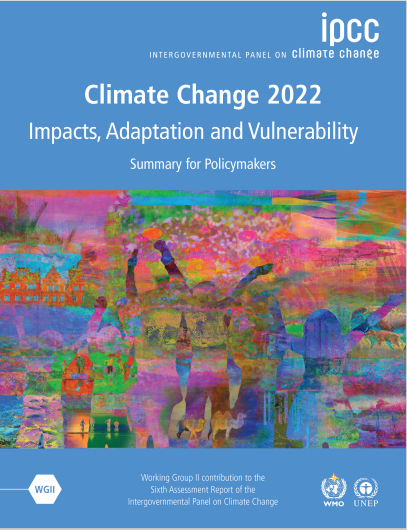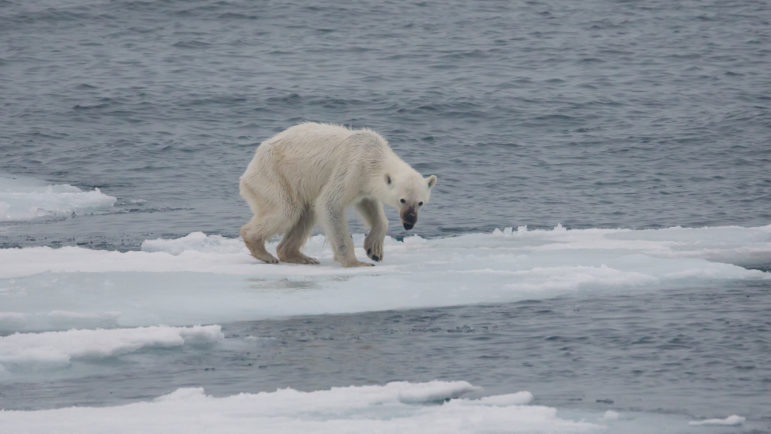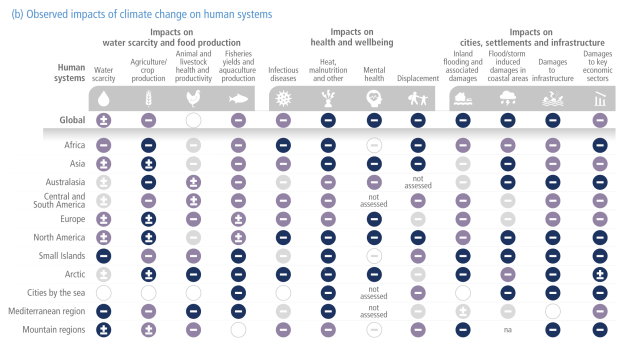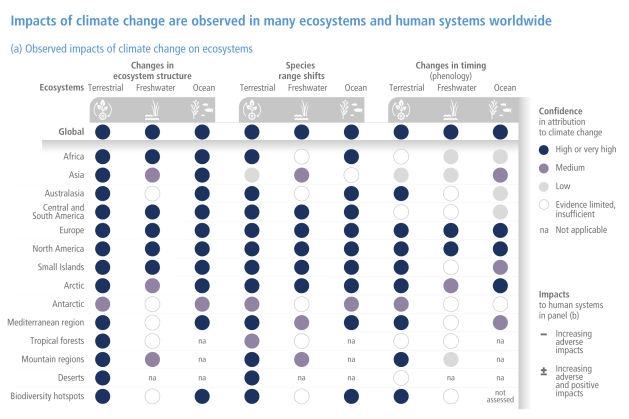TWH – In February 2022, a Working Group of the Intergovernmental Panel on Climate Change (IPCC) issued their report “Climate Change 2022: Impacts, Adaptation, and Vulnerability. Summary for Policy Makers.”
The IPCC’s reports drive international climate change negotiations. That 37-page report summarizes a 3,676-page report.

The authors of this Summary provide five levels of confidence in their conclusions. Those levels range from very low, low, medium, high, to very high. This article will only report those findings with a high, or very high, level of confidence.
Climate Justice
Climate change differs in its impact. Some differences involve the physical features of a region. For Small Island Nations, rising sea levels threaten their existence. Melting sea ice poses a similar threat to the Arctic.
Economic resources matter. Burkina Faso or Honduras have far fewer resources than the U.S. or Europe. That difference means that climate change threatens the Global South much more than it does the Global North.
Burning fossil fuels, like coal and gas, powered the Industrial Revolution, which drove the growth of the Global North. The Global North has pumped into the atmosphere most of its greenhouse gases. Those who contributed the most to climate change face the least risk from its impacts.
In this Summary, climate justice has three components: distributive justice, procedural justice, and recognitive justice. Distributive justice involves who pays for the burdens and who reaps the benefits. Procedural justice refers to who gets to make decisions. Recognitive justice refers to respect and engagement of diverse cultures and views. The Summary defines climate justice as an essential criterion for any risk reduction policies.
For a baseline, this Summary uses global surface temperatures from 1850 to 1900. That period reflects the tail-end of the global pre-industrial era.
Already existing climate change impacts
“Substantial damages, and increasingly irreversible losses” have already occurred. These damages and losses exceed previous estimations.
Animals, birds, fish, and insects have begun to change when they migrate. Species have begun to seek cooler temperatures higher up hills or further away from the Equator. Mass mortality events and species loss have already occurred. Permafrost thaw has caused the loss of entire Arctic ecosystems.

Starving polar bear trapped by melting ice – Image credit: Andreas Weith – CC BY-SA 4.0
Researchers have found evidence of these changes on all continents, except on Antarctica. Though that is likely to change. New reporting from last Friday saw record-high temperatures in Antarctica, 70 degrees above what is normal for this time of year.
Africa, Australia, the Arctic, Central and South America, and Small Island Nations have had the greatest climate change damage. That damage has occurred across many ecosystems. Europe and North America have also had widespread damage from climate change.
Some areas have a higher risk. On a Small Island Nation, a land species can only move so far, until it has to adapt, mutate, or become extinct. Rising sea levels mean a shrinking island. A large part of the “landmass” in the Arctic is composed of ice sheets covering open water. Climate change in the Arctic results in this pseudo-land disappearing.
Almost all these changes are for the worse. In certain continents, these changes had beneficial impacts. Crop production has increased in Asia, the Arctic, Europe, and North America. Aquaculture has increased in Europe and North America. Water scarcity has decreased in Asia, Europe, and North America.
Impacts on health and wellbeing have been negative in all continents. Impacts on cities, settlements, and infrastructure have also been negative on all continents.
None of the beneficial impacts have occurred in Africa, Australia, Small Island Nations, or Central and South America.
Near Term Risks 2021 to 2040
Relative to the global pre-Industrial reference period, global surface temperatures rose by 1.09 degrees Celsius (2 degrees Fahrenheit) between 2011 and 2020. In the near-term, global temperatures are expected to rise to or exceed 1.5 degrees Celsius (2.7 degrees Fahrenheit). This rise will likely occur regardless of efforts to minimize those greenhouse gases. Humans may no longer be able to prevent all climate change. Not altering human behavior and practices will add to it. Alternatively, they can lessen future greenhouse gases, and adapt to what can’t be changed.
Land and water ecosystems will see species loss. Kelp forests, Arctic sea-ice, and coral reefs have high risk for species loss. Coastal areas with seasonal rivers face the greatest risk.
Mid to long-term risks 2041 to 2100
Temperatures limit where humans can live and work. The Ice Ages drove humans towards the Equator. Climate change may drive people away from the Equator.
Between 2041 and 2100, species loss will increase in all regions. Water will become scarcer. Droughts, floods, heatwaves, and sea-level rise will threaten food security. A 2 degrees Celsius (3.6 degrees Fahrenheit) rise in global temperatures will threaten famines in sub-Saharan Africa, South Asia, Central and South America, and Small Island Nations.
Climate change and extreme weather events will “increase ill health and premature deaths.” In Asia, Europe, Central and South America, and sub-Saharan Africa, the areas at risk for dengue fever will expand.
Adaptations
Climate change damages are now unavoidable. Many adaptations still remain possible and necessary.
Many cities and countries have taken up adaptation policies. Some of these policies are too fragmented to protect against multiple risks. Others focus more on planning than acting, and the lack of funding is common.
Adaptations to drought and flooding involve improving irrigation, conserving soil moisture, and managing water on farms. These adaptations require careful management to avoid unintended consequences.
To protect food security, people can adapt through agroforestry and urban gardening.
Adaptations to protect forests include managing sustainable forests and diversifying tree species. The latter also protects against pests and diseases. Protecting forests also increases carbon storage. These policies will require the full assent of the populations, frequently the indigenous, who dwell in and around forests.
Nations can protect against sea-level rise by restoring wetlands. A more dismal adaptation to sea-level rise involves “advance and planned relocation.” It is also known as “managed retreat.” For these policies to work, the populations to retreat have to actively assent. They also have to believe the decision to retreat was just. If not, social conflict will result.
Adaptation to climate change threats includes “climate-related displacement and involuntary migration.” A blunter term would be “climate refugees.”
This Summary provides a technical summary of current thinking about climate change. It also discusses how to adapt to it. This type of technical thinking has great importance. Acting on its findings requires political decisions. In democratic systems, this involves public debate and building coalitions.
The Wild Hunt is not responsible for links to external content.
To join a conversation on this post:
Visit our The Wild Hunt subreddit! Point your favorite browser to https://www.reddit.com/r/The_Wild_Hunt_News/, then click “JOIN”. Make sure to click the bell, too, to be notified of new articles posted to our subreddit.


